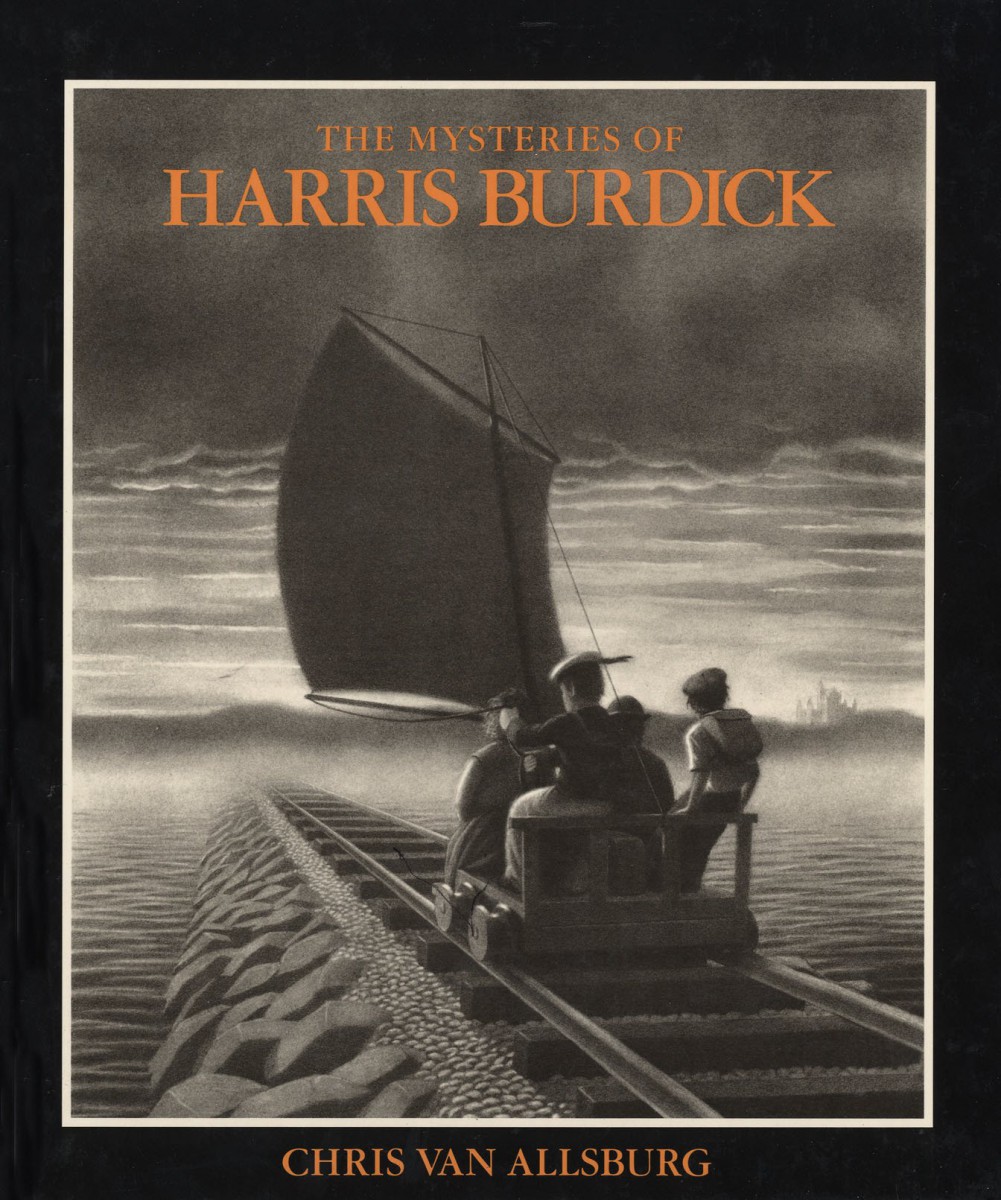Van Allsburg uses different techniques to tell the story. He has all of his images on the left page and quotes on the right page. This allows the viewer to imagine what the story is and invites creativity. This also encourages viewers to think of each page in the story. Each image uses dramatic lighting and facial expressions which sets up the mood for mystery. The realism of the art also adds to the appeal. The moments he chooses are so effective because he intentionally uses cliffhangers to gain interest and this enfores his theme that every picture tells many stories.
Category: Discussions (Page 2 of 18)

The Mysteries of Harris Burdick is a fascinating and unusual book. It opens with an introductory letter from Chris Van Allsburg himself, explaining the book’s origins. “I first saw the drawings in this book a year ago, in the home of a man named Peter Wenders,” Van Allsburg begins. He goes on to explain that many years earlier, a man called Harris Burdick stopped by the office of Peter Wenders, who then worked for a publisher of children’s books, choosing stories and pictures to be made into books. Burdick brought one drawing from each of fourteen stories he had written as a sample for Mr. Wenders. Fascinated by the drawings, Wenders told Burdick he wanted to see the rest of his work as soon as possible. Promising to bring the stories in the next day, Burdick left—never to be seen again. The fourteen pictures he left behind—and their accompanying captions—remained in Wenders’s possession until Van Allsburg himself saw them (and the stories that Wenders’s children and their friends had long ago been inspired to write by looking at them). The mysterious pictures, writes Van Allsburg, are reproduced for the first time in the hope that they will inspire many other children to write stories as well.
Synopsis from the Houghton Mifflin Harcourt Teacher’s Guide
Chris Van Allsburg’s celebrated and thought-provoking illustrations in The Mysteries of Harris Burdick have intrigued readers of all ages for the past 25 years. Each illustration highlights a critical moment of a story, accompanied only by a single line of text and a title, forcing the readers to create the rest of the tale for themselves. This book is a stunning case study in the power of using the technique of freezing a moment in time coupled with picking the right event, the right critical moment in the narrative, to drive forward the drama and storytelling of the image.
What techniques does Van Allsburg use to tell the story?
Why are the moments he chooses so effective?
DISCUSS!
Tomer Hanuka uses digital tools to aid in composition by drawing over the original drawing with a digital pen and making corrections as they retrace. Hanuka also rotates the screen to be able to work on certain parts of the art piece that are difficult. By doing this, they are able to attain the desired composition. Hanuka uses layers to be able to draw over and color certain areas of the art piece without interfering with the other areas that need specific colors or any other special attention. The steps the artist use to execute this art piece is redrawing over the original sketch, using layers to draw different characters in different colors, and lastly using layers to color in the characters, the shadows, and background. The take-away from watching this artist at work is being as organized as possible when adding colors to art.




Recent Comments